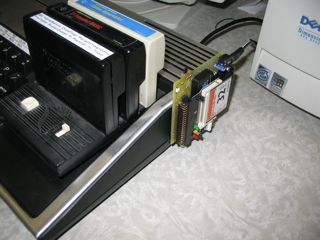May 2010
iPad Review for Education
27/05/10 00:00 Filed in: Computer
| thursday, 27 may 2010 00:00 |
| Over the past month, I have investigated the use of iPads in our local elementary school where my wife teaches. Last week, I presented my findings to a small group of teachers, the prinicipal and technical support staff. While most of the presentation was a general overview of the iPad, there were a few specifics relative to education that I will review here. I had 68 slides of which about 40 were direct screen shots from the iPad, Mac or PC screens. The presentation was developed with Apple's Keynote application on a Mac and presented through Keynote on the iPad. An iPad VGA adapter cable was used to connect to an overhead projector, but does not support direct projection of the iPad screen. Only output from Keynote, YouTube and other video apps can use the VGA adapter. |
TI99 CF7+
03/05/10 13:22 Filed in: Computer
| I have a couple of new additions to my old TI99 computer systems in the last week [May 2010]. First, I now have 10 reconfigured cartridges that include brand new circuit boards with a 64k EPROMs. These were developed, manufactured and distributed by members of the international |
